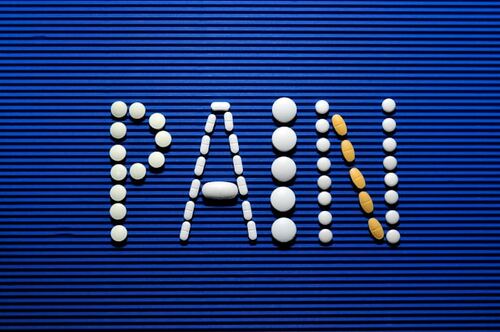
Before making your software available to end customers, you have to confirm that it performs as intended and complies with quality requirements. But how can you efficiently examine this thing without wasting unnecessary time and money? Smoke testing and Sanity testing are the two types of testing that can assist you in accomplishing this. In this article, we will explain smoke testing and sanity testing, how to apply them, and the advantages they provide in your software development process. Additionally, we will discover how they can significantly enhance efficiency and effectiveness when combined with automation testing. Keep reading to find out more!
What Does Smoke Testing Mean?
Smoke testing, sometimes known as build verification testing or confidence testing, is a software testing approach employed to ascertain the readiness of a fresh software build for the subsequent testing stage. This method evaluates the core features of the program without getting into more specifics. In other words, smoke testing serves as an initial examination of software, revealing fundamental issues in an application before moving forward with more extensive testing. If a software component clears a smoke test, the QA(Quality Assurance) team continues with additional testing. If it fails, the development team needs to take the software back to fix the issue.
The purpose of smoke testing is to find significant yet straightforward failures by using test scenarios that address a software’s critical functions. QA teams execute smoke tests on each build, concentrating on software functionality with a minimal set of tests. Skipping smoke testing could allow significant problems to go undetected, potentially resulting in more significant issues down the road.
The following types of smoke testing are available:
Manual Smoke Testing: Human software testers perform manual smoke tests. This involves manually creating and updating test cases and writing test scripts for new or existing features.
Automated Smoke Testing: An automated smoke test employs specialized software tools to streamline and optimize the smoke testing process. This approach greatly enhances efficiency by automating the execution of relevant tests, reducing the need for manual intervention, and ensuring that critical functionalities are verified swiftly and accurately.
Hybrid Smoke Testing: In this type of smoke testing, testers begin by developing test cases. Subsequently, they utilize a specialized tool that can automate a wide range of both manual and automated smoke tests, streamlining the testing process for increased efficiency.
When Should You Employ Smoke Testing In Software Testing?
You may be curious to know about the right time to conduct Smoke Testing. The straightforward answer is that Smoke Testing should be carried out whenever new features or functionalities are introduced to the software, along with delivering a fresh build. After the development team delivers a new build, certain members of the QA team can initiate Smoke Tests. They compile a set of cases to check that crucial functionality remains unaffected and then execute these tests. If the tests pass, the build is promoted to the QA environment, allowing the remainder of the QA team to proceed with Functional Testing for both the new feature and existing ones.
If the tests are unsuccessful, the QA environment will reject the build and continue to use the current stable version until the development team provides a new one that has all of the issues fixed. As long as the Code Freeze is in effect, this procedure is repeated. The primary goal of smoke testing is to catch significant problems early on. Smoke tests aim to show that the system is stable and meets the requirements. A build contains all the necessary data files, libraries, reusable modules, and engineered components for implementing one or more product functions.
What Occurs When We Skip Smoke Testing?
If we neglect Smoke testing during the initial phases, we may encounter defects in subsequent stages, which can incur significant costs. Furthermore, defects discovered in later stages can become major roadblocks, potentially impacting the release of deliverables.
How Can You Apply Smoke Testing During Software Testing?
Smoke testing examines the user experience and checks vital functions like build accessibility, proper functioning of the user interface, and the login mechanism. It also ensures that selected actions align with their intended actions. The way smoke tests are conducted relies on the specific type of test, and different organizations may use varying approaches.
A typical way to conduct a smoke test involves the following:
Choose Between Manual, Automated, or Hybrid Testing: Most often, manual testing is the initial choice, and automated tests are carried out when additional elements are included in the smoke test.
Generate Test Scenarios: QA testers understand the required number of test cases for each essential software feature and establish pass-or-fail criteria following software and organizational requirements and standards.
Generate The Smoke Tests: Write and generate the test suites using either manual or automated methods.
Execute And Document The Tests: As the smoke tests are executed, testers should establish a procedure for reporting the results of each test, which can be done manually or through automation.
Examine The Outcomes Of The Smoke Test: If the software doesn’t succeed, send it back to the development team for further testing. If it succeeds, it is prepared for more thorough functional testing.
What Advantages Does Smoke Testing Offer?
Smoke testing proves its worth in the testing process for these reasons:
- It ensures that future builds are based on error-free software.
- Early detection of defects occurs.
- It reduces the risks linked with adding code to existing build integrations.
- Smoke tests can be executed frequently due to their minimal resource demands and straightforward procedure.
- Implementation is versatile, whether manual, automated, or hybrid.
- It confirms software quality in the initial stages of development, guaranteeing build stability.
- Automation speeds up and increases test frequency.
What Does Sanity Testing Mean?
Sanity testing, also known as surface-level testing, is a kind of testing that helps to check a stable software build. It is a fast and straightforward way to confirm that recent code changes are bug-free. It is a part of Regression testing and typically happens after the Smoke test passes.
Let’s take an example to understand Sanity Testing
Imagine you are developing an online Food ordering app, and you intend to provide a 10% discount on New Year’s Day (1st January) for your elite members. Sanity testing ensures the following
- On January 1st, exclusive members receive a discount.
- Those who include elite membership with their food orders on the 1st also enjoy the discount.
- Regular members do not receive this discount on January 1st.
- No member is eligible for this discount before or after January 1st.
- Additionally, you cannot combine other discount coupons with this 10% deduction.
- Elite members who choose other promotions do not receive the New Year deduction.
Sanity testing focuses solely on certain app aspects, such as delivery tracking or restaurant reviews, while Smoke testing and Regression testing handle those areas both before and after the Sanity testing phase. If the Sanity test doesn’t pass, the developer needs to troubleshoot the app, but if it passes, the app proceeds to undergo comprehensive System testing.
When Should You Employ Sanity Testing In Software Testing?
You should conduct a Sanity Test under these conditions:
- When there’s a slight modification in the code.
- Upon receiving the build, following several regressions.
- After resolving bugs.
- Before deploying it to production.
How Can You Employ Sanity Testing During Software Testing?
The Sanity testing procedure involves these steps:
Identification: During this specific phase of the software development process, your primary tasks involve recognizing the newly introduced features and components. Additionally, you need to keenly observe and identify any code adjustments that might have been implemented as part of the bug-fixing efforts.
Evaluation: A thorough examination of the newly introduced components and attributes is conducted to assess their functionality following the specified requirements. If necessary, appropriate adjustments are made to ensure they operate as intended.
Testing: A smaller part of the newly added components is tested carefully. If they don’t meet the requirements, the test fails. If they do, it passes the Sanity test. After that, thoroughly test the whole system to make sure the new components don’t disrupt the existing system and applications.
What Advantages Does Sanity Testing Offer?
Here are some of the benefits of sanity testing:
- It quickly finds issues in a software’s main functions.
- It can be faster because there’s no need for documentation.
- If problems show up in sanity testing, it rejects it, which saves time and effort for later tests.
- It costs less than other testing methods.
- It spots missing dependent objects.
- It checks a small part of the app to see if it works as it should.
- It helps ensure the app works rather than exhaustive testing.
- It’s useful when the time for testing is short.
How Does LambdaTest Help You In Smoke And Sanity Testing?
LambdaTest helps with smoke and sanity testing by providing an AI-powered test orchestration and test execution platform for checking if important functions work on different browsers, devices, and systems. It allows teams to do quick checks simultaneously on different environments, saving time during testing. The platform’s live interactive testing tool makes sanity testing easier. Testers can use it to check if basic functions still work after code changes or updates by manually trying different setups. LambdaTest also provides innovative automation choices that allow teams to automate repeated smoke and sanity tests, which helps in quick testing. In short, LambdaTest increases the effectiveness of smoke and sanity testing, assisting teams in delivering excellent software confidently.
Final Verdict
We saw through this article that smoke testing rapidly finds critical issues in the beginning stage, making sure that the basic operations are working. Sanity testing goes further, examining specific parts and functionalities to ensure they work as they should. When smoke and sanity testing join together, they act as a powerful team to avoid major errors and ensure that your software is ready to be released. By incorporating these testing techniques into your software development process, you may raise the calibre of your software, reduce the likelihood that it will encounter issues after release, and ultimately deliver a product that meets or even exceeds user expectations. Remember, utilizing thorough smoke and sanity testing remains crucial for developing robust, trustworthy, and user-friendly programs as software keeps evolving.







